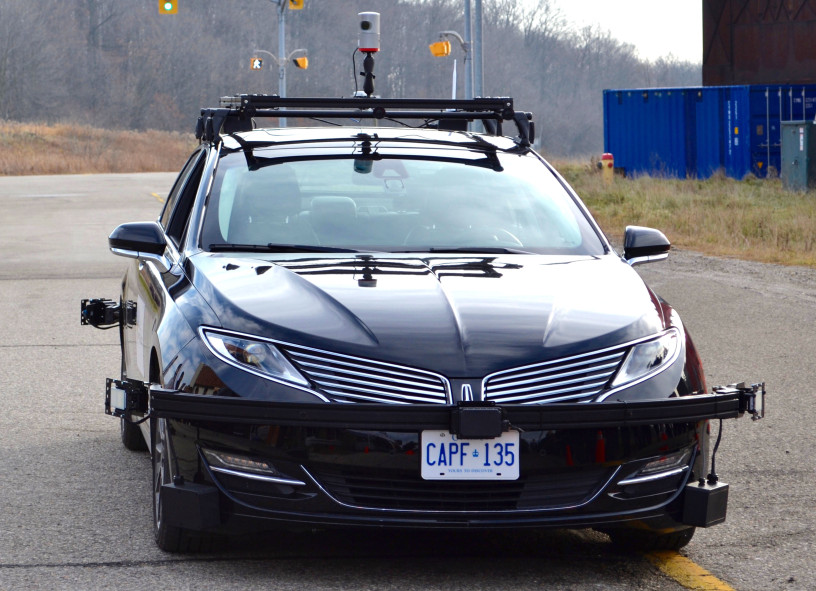The Ontario government has approved a research project at the University of Waterloo (U of W) to allow three self-driving vehicles to start driving on Ontario public roads.
The pilot program is a combined project with the U of W’s Centre for Automotive Research (WATCar), the Erwin-Hymer Group, and Blackberry QNX, each testing one of the vehicles, according to a press release by U of W.
The car is fully connected to the internet, uses radar, sonar, and lidar, and will always have a researcher behind the wheel in case it loses control, according to the release. U of W will be testing a Lincoln MKZ hybrid sedan nicknamed Autonomoose.
Ross McKenzie, managing director of WATCar, said the vehicle’s name is a “clever play on words,” an ode to the Canadian moose.
“We at Waterloo are very proud to be chosen for this project,” McKenzie said. “We have a great engineering program here, and they will be working with members of the computer science program as well.”
Currently, Ontario law requires a human driver at the wheel for safety measures. A release from Swedish research firm Berg Insight last month reported vehicles that don’t require a human at the wheel aren’t expected to be widely available until after 2030.
After Ontario became the first province in Canada to create a regulatory framework for testing automated vehicles (AVs) back in January, this will be the first program of its kind in Canada, according to a Government of Ontario release.
The project has been supported by the Government of Ontario’s Ministry of Transportation, which said in a release the pilot will “help attract and enable research and development in Ontario” in the self-driving car industry. The ministry also said the self-driving car project is part of the government’s plan to create jobs and grow the economy by supporting transportation innovation.
The WATCar research team includes nine professors and a team of graduate students, according to McKenzie.
“The goal is to utilize the professors’ areas of expertise, as well as use the project as an education tool for the students in their own research,” he said.
U of W said they hope the project will improve automated driving in “challenging Canadian weather conditions,” and reduce future emissions.
The vehicle will drive everywhere from suburban streets to highways, McKenzie said.
“The end goal is to use all the opportunities provided by this project as a learning experience for us,” he said.
– Photo is provided.






